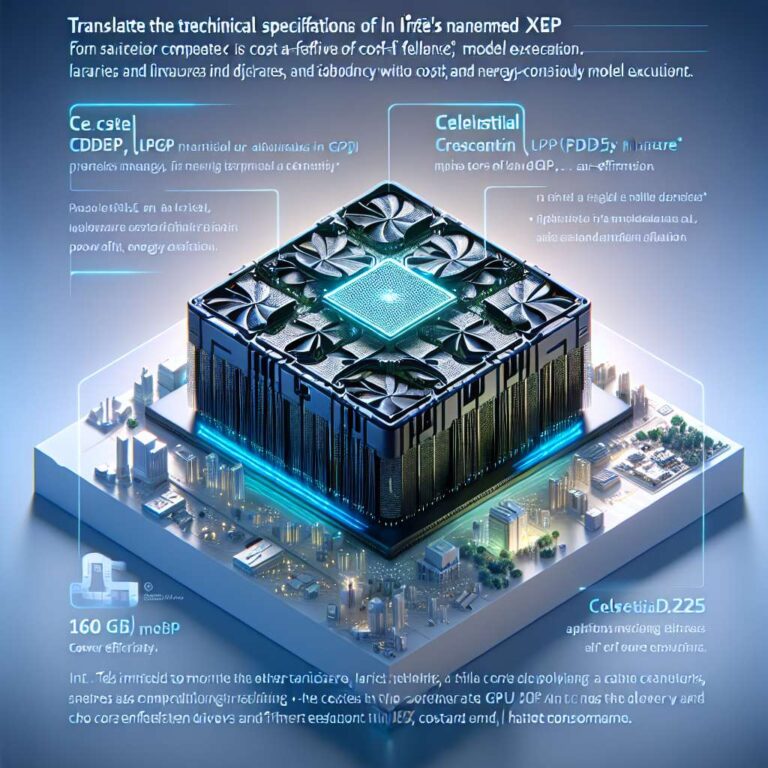Intel unveiled the Crescent Island graphics processing unit, a data center chip purpose-built for Artificial Intelligence inference. Based on the next-generation Xe3P architecture, the GPU emphasizes performance-per-watt and air-cooled operation, targeting enterprises that prioritize power efficiency and simpler deployment. With 160 gigabytes of LPDDR5X memory, Crescent Island is positioned for high-capacity inference workloads, and was teased during Intel’s recent Tech Tour in Arizona as part of the company’s renewed focus on inference-optimized hardware.
The Xe3P architecture, also known as Celestial, advances Intel’s prior Xe designs with features tailored to Artificial Intelligence tasks. Crescent Island is designed strictly for inference rather than training, aiming to deliver rapid, cost-effective execution of models such as large language models and recommendation engines. Its sizable 160 GB memory pool, combined with LPDDR5X’s high bandwidth and lower power draw, is intended to reduce data shuffling and latency in real-time applications while keeping energy use in check.
Intel plans to begin customer sampling in the second half of 2026, a timeline that underscores the complexity of bringing new silicon to market while signaling a deeper commitment to Artificial Intelligence. Crescent Island is positioned to complement Intel’s Gaudi accelerators, creating a broader portfolio for different stages of model deployment. The company is emphasizing open-source compatibility and alignment with Linux-based ecosystems, which could ease adoption for developers familiar with Nvidia’s CUDA environment but evaluating alternatives.
Software remains a pivotal challenge. Intel’s stack has trailed Nvidia’s more mature ecosystem, but recent work refining open-source tools using Arc Pro B-Series GPUs is presented as groundwork for smoother Xe3P integration. Intel also points to collaborations, including a partnership with Nvidia announced in September 2025 to co-develop x86 system-on-chips incorporating RTX GPU chiplets, as a way to enable hybrid CPU and GPU workflows. Market projections cited in the coverage suggest strong growth for the Artificial Intelligence inference segment through 2033, underscoring the opportunity if Intel executes on hardware and software.
Strategically, Crescent Island is pitched on cost optimization and energy efficiency, attributes that may appeal to price-sensitive sectors such as healthcare and finance. The choice of air cooling over liquid solutions could lower deployment barriers for smaller or retrofitted data centers. Ultimately, success will depend on developer uptake, real-world benchmarks, and the pace of Intel’s software ecosystem progress, with Crescent Island serving as a key component in the company’s push to compete more directly with Nvidia in inference-focused computing.

